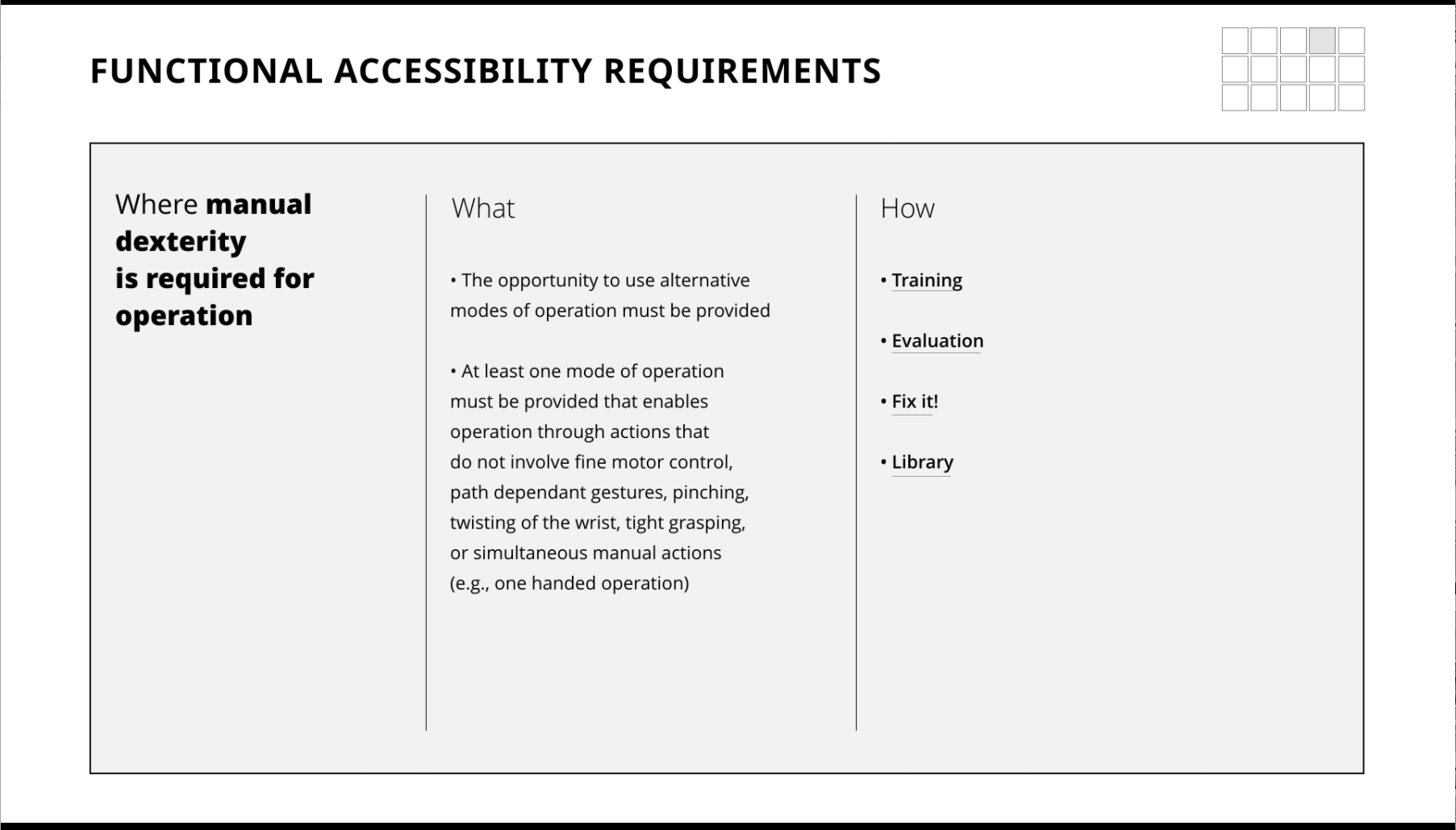Functional Accessibility Requirements: an online toolkit approach to procurement
The following three wireframes represent a web page sequence of a toolkit intended to support government employees tasked with procuring accessible ICTs. The framework is based on the idea of reflecting needs and not deficits and of switching the point of view to the user. The working title of the framework is Functional Accessibility Requirements (FARs).
https://xd.adobe.com/view/b6e29cd2-0bc7-48db-b535-8f3bd5ca6eb5/
DESCRIPTIVE TEXT
- In Frame 1, fifteen "Needs" of the FARs framework are laid out in a grid formation of five across by three down. The fifteen Needs are:
- Where visual modes of presentation are provided
- Where auditory modes of presentation are provided
- Where speech is required to operate a function
- Where manual dexterity is required for operation
- Where hand strength is required for operation
- Where operation requires reach
- Where memorization is required for use
- Where text literacy is required for use
- Where extended attention is required for use
- Where operation has time limits
- Where controlled focus is required for use
- Where specific sequencing of steps for operation is required
- Where abstract thinking is required
- Where accuracy of input is required
- Where biometrics are employed
- Frame 2 shows the same grid formation and Needs as Frame 1. Need four, "Where manual dexterity is required for operation", is highlighted representing focus.
- Frame 3 is a landing page example for "Where manual dexterity is required for operation". The page includes both qualifying information (WHAT) and links to tools intended to support a user's full experience of procuring accessible ICT goods and services (HOW).
The content of the landing page example is as follow:
Where manual dexterity is required for operation
WHAT:
• The opportunity to use alternative modes of operation must be provided
• At least one mode of operation must be provided that enables operation through actions that do not involve fine motor control, path dependant gestures, pinching, twisting of the wrist, tight grasping, or simultaneous manual actions (e.g., one-handed operation)
HOW:
• Training
• Evaluation
• Fix it!
• Library


